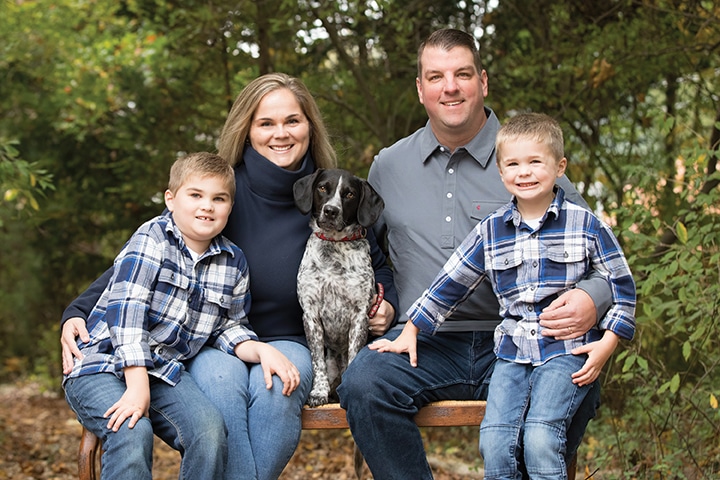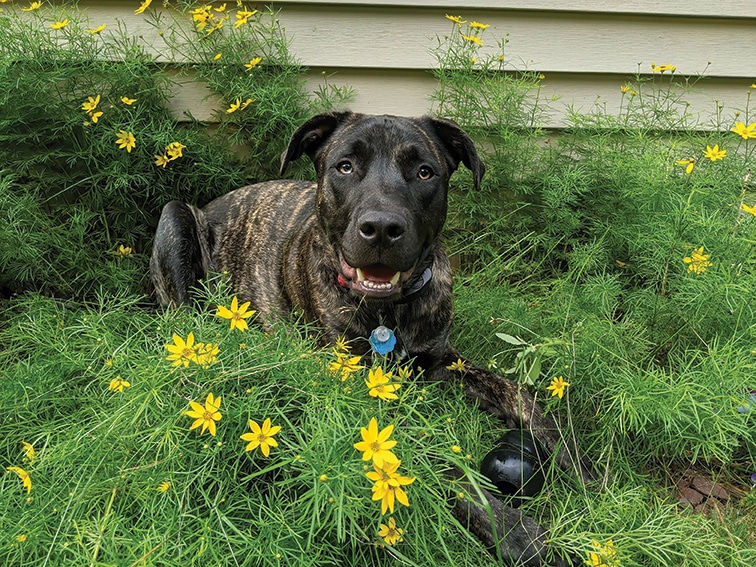Over the last two years, more than 23 million American households adopted a pet, according to the American Society for the Prevention of Cruelty to Animals (ASPCA). Ridgefield residents Sarah and Brad Blosat were among the one in five families that opened their home to a shelter animal during the pandemic. They had been considering getting a dog for a while but had concerns about the huge commitment. With more time on their hands when they began working from home, they decided to take the leap. “Adopting a dog was something to be excited about during a difficult time,” said Blosat.
The pandemic forced many businesses to adjust their operations and animal shelters were not exempt from these restrictions. To comply with CDC guidelines, shelters like Norwalk’s Pet Animal Welfare Society (PAWS) fostered out or adopted most of their pet residents. “To be socially responsible, we needed to decrease the number of animals at the shelter, so we could reduce the number of people coming in,” said Ellen Simmonds, PAWS Executive Director. PAWS reached out to their employees as well as the greater Norwalk community for assistance in placing animals. “It was a true bump of kindness that our staff and volunteers all stepped up and helped,” Simmonds said.
Jill Bogdanoff was one of the people who answered PAWS’ request for fosters. “I wasn’t thinking about adopting, I just wanted to help out,” said Bogdanoff, who lives in Norwalk. She and her boyfriend took in Snowflake, a 65-pound pitbull. Bogdanoff had pitbulls growing up, so she was experienced with the breed. She hoped that spending time in a home would improve Snowflake’s chances of adoption. But when a potential placement for Snowflake fell through, Bogdanoff was surprised at the relief she felt. “I took it as a sign that she was supposed to stay with us,” Bogdanoff said. A few days later, they adopted the dog and renamed her Stella.
As stay-at-home mandates persisted, adoption rates escalated, but the demand was sometimes higher than the supply of available pets. “In the beginning of the pandemic, it was really hard to find a dog,” said Blosat. Shelters strived to make sure that potential adopters knew what they were getting into. “We needed people to understand that this is not just a pandemic dog, but an animal you are keeping for the rest of its life, as a part of your family,” said Dorene Zurlo, Director of Volunteer Services for the Ridgefield Operation for Animal Rescue (ROAR).
After unsuccessfully applying for several dogs, Blosat’s application was approved to adopt Mack, a beagle-mix from an animal shelter down South. She said the shelter did a thorough job vetting her family as adopters. Mack was transported to Connecticut and welcomed into their home. “Mack has changed our lives. Our children used to be hesitant around dogs, but Mack has helped them through that,” said Blosat.
Ridgefield resident Kate Krsulich said that having her five children home during hybrid schooling in 2020 helped her decide to welcome a new puppy into their family. “I definitely gave the kids more responsibilities,” she said. Krsulich, who was a volunteer at ROAR at the time, had initially only agreed to foster Bailey, a Labrador-mix puppy. Bailey was great with Krsulich’s kids and also bonded with Cooper, the family’s other dog. They quickly became what’s called a “foster fail,” a lighthearted term for when a foster family permanently adopts a dog or cat. “Bailey just fit right in,” Krsulich said.
For the most part, these recently adopted pets are staying put. Despite alarmist headlines indicating a surge in people surrendering pets adopted during the pandemic, the majority of owners are not considering rehoming their animals. “In this area, we’re not experiencing the rate of return that is reported in the news,” said Zurlo. Simmonds agreed, adding, “If we did get returns, it was because the fit was not right. Most people took these animals in and fell in love.” Careful placement is crucial for successful pet adoption. “We always strive to make the best possible match,” said Zurlo.
Carolyn Lemoine of Wilton experienced one such successful pairing. “I never thought I could be a full-time pet parent because of work,” said Lemoine, also a volunteer at ROAR. When the pandemic curtailed her busy travel schedule, Lemoine took the opportunity to foster several cats and kittens. “I realized that fostering these cats could change the trajectory of their lives,” she said. In the fall of 2020, she took in Taco Bella, a 14-year-old cat who had survived outside despite being declawed and having bad teeth. “I really wasn’t looking to adopt, but after a few days, I knew this was the cat for me. She’s the perfect roommate,” said Lemoine.
As Covid restrictions continue to lift and people return to in-person work, new pet owners will need to adjust their routines for pets that are used to having their humans around. “Start by leaving your pet for short periods and slowly increase the amount of time you are away,” said Dr. Carol Gamez DVM of Georgetown Veterinary Hospital. Dr. Gamez also recommends rewarding your pet with some bonding time when you come home, such as a walk or playtime. 
Many pet owners have already begun to ease into this transition. Blosat and her husband have flexible work schedules that allow them to spend time with Mack. Others have shelled out extra money to care for their pets while they are away. Lemoine is looking into hiring a cat sitter for Taco Bella if she needs to travel. Bogdanoff is willing to rework her monthly budget to include a dog walker for Stella. “We’ve found that pet owners are willing to make the changes needed to keep their pets,” said Simmonds.
The last two years have certainly been difficult, but if any good has come out of the pandemic, it probably has four paws and a wagging tail. Pets provided a much-needed outlet for exercise and companionship during a time of isolation. Families that adopted not only saved that animal but made space for shelters to rescue more. Covid took a lot from us, but maybe it gave us something too. •